If you know me, you know I am particularly fond of Walther handguns. I have been carrying a Walther PPQ M2 for years now, and consider the company one of the finest in the business. Walther recently released a new firearm, a 9mm called the PDP F-Series, designed especially for women and/or people with small hands. We’ve been running evaluations at The WON of this new gun by the women who were instrumental in the design and who are now spreading the word about it.
Sponsored by Walther Arms
Walther’s pro staff – Tatiana Whitlock, Michelle Waldran and Gabby Franco – have been anticipating the release of this gun for quite some time. I finally got one as a loaner to review, and I can see why they are pleased with its performance.
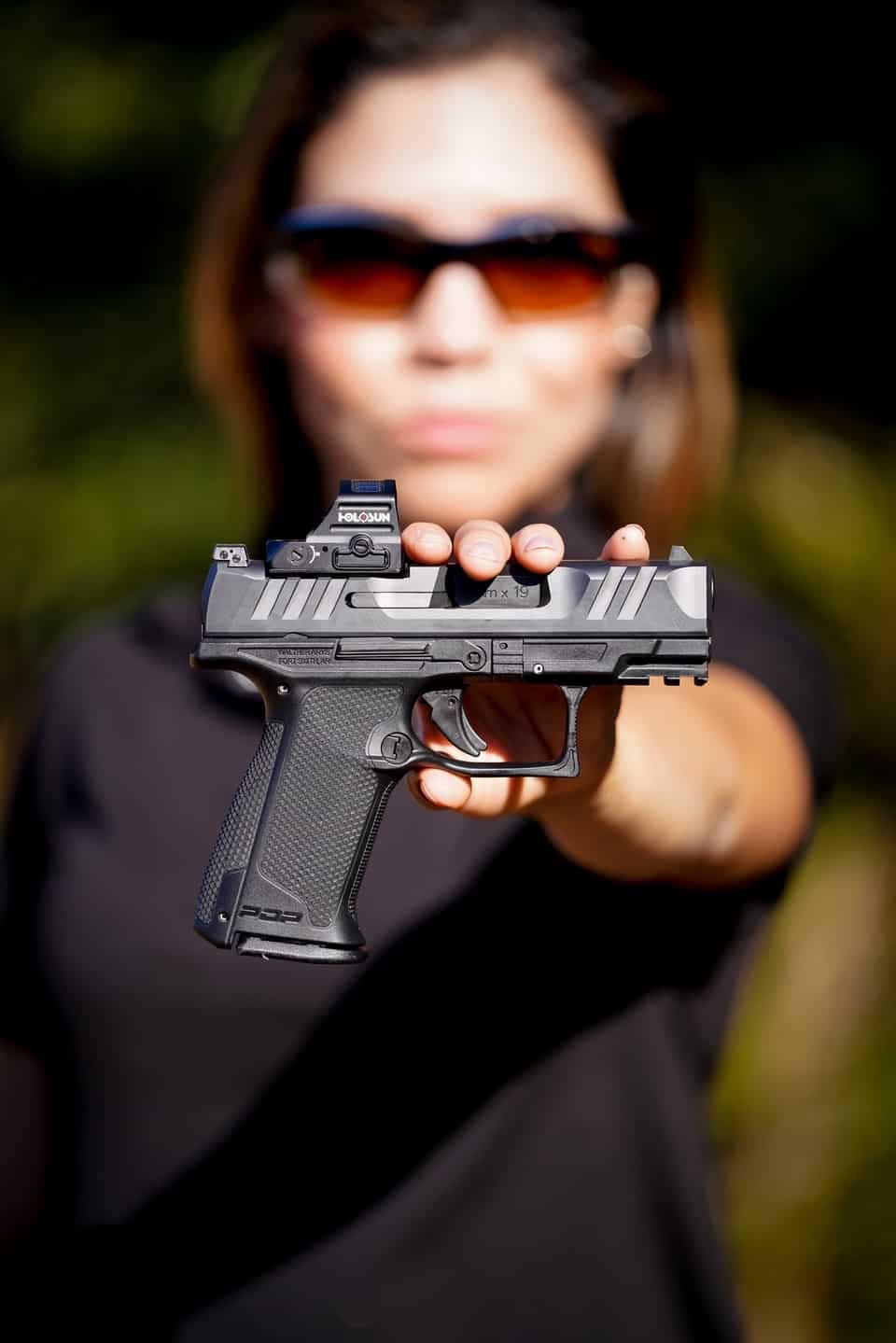
Walther designed the PDP F-Series to fit a woman’s hands. Three specific features make it female-friendly (and to anyone with small hands, actually). First, Walther paid attention to the grip angle. It allows for a higher grip on the gun. Second, it narrowed the grip circumference slightly. Third, it shortened the reach for the trigger.
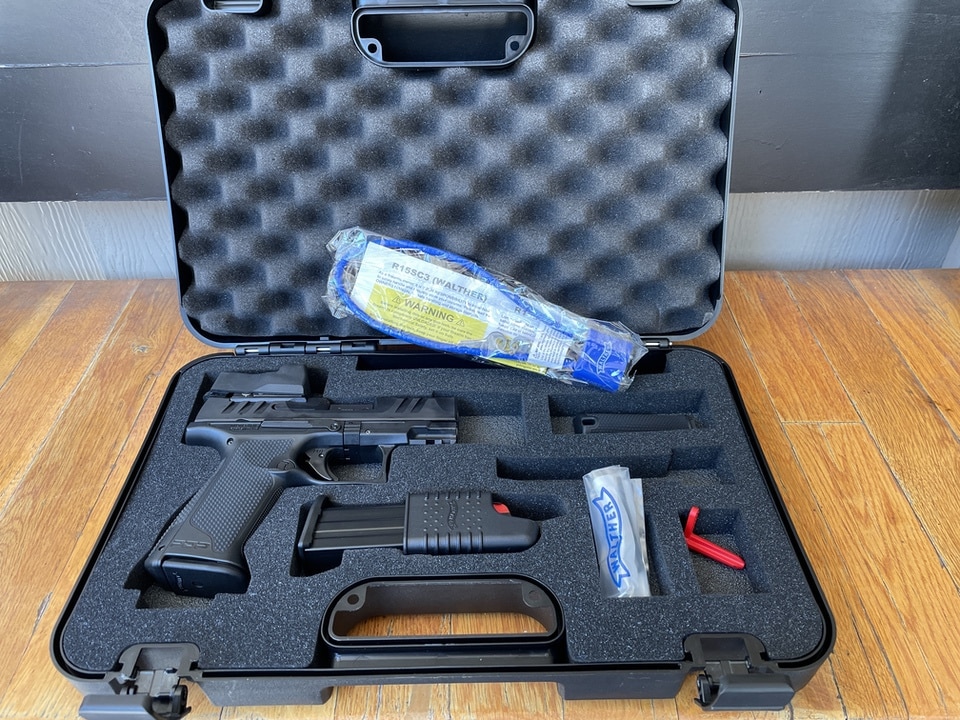
The pistol’s SupertTerrain Slide Serrations and the Performance Duty Texture on the grip allow for better control of the pistol when operating the slide and shooting. As Gabby explained, in this review of the PDP F-Series, “For starters, the PDP F-series puts us at the same level with people who don’t have to adjust their hands to reach the trigger. It levels things out. For instance, when I have to adjust my grip, most of the recoil goes into the thenar eminence (mound of flesh in the palm at the base of the thumb). That also means, that I have to put a lot more effort to control recoil, especially in my support hand. Conversely, the whole back part of my palm is receiving the recoil with the F-series, instead of into my little thumb.”
Because the gun comes optic ready (You must specify the optic so Walther can send you a plate for your red-dot via a card included with the pistol.), for this review we mounted a Leupold DELTAPOINT-PRO on it. We also checked it over thoroughly, cleaned it and acquainted ourselves with its safety functions and operation, just as you should do whenever you get a new (or used) gun.
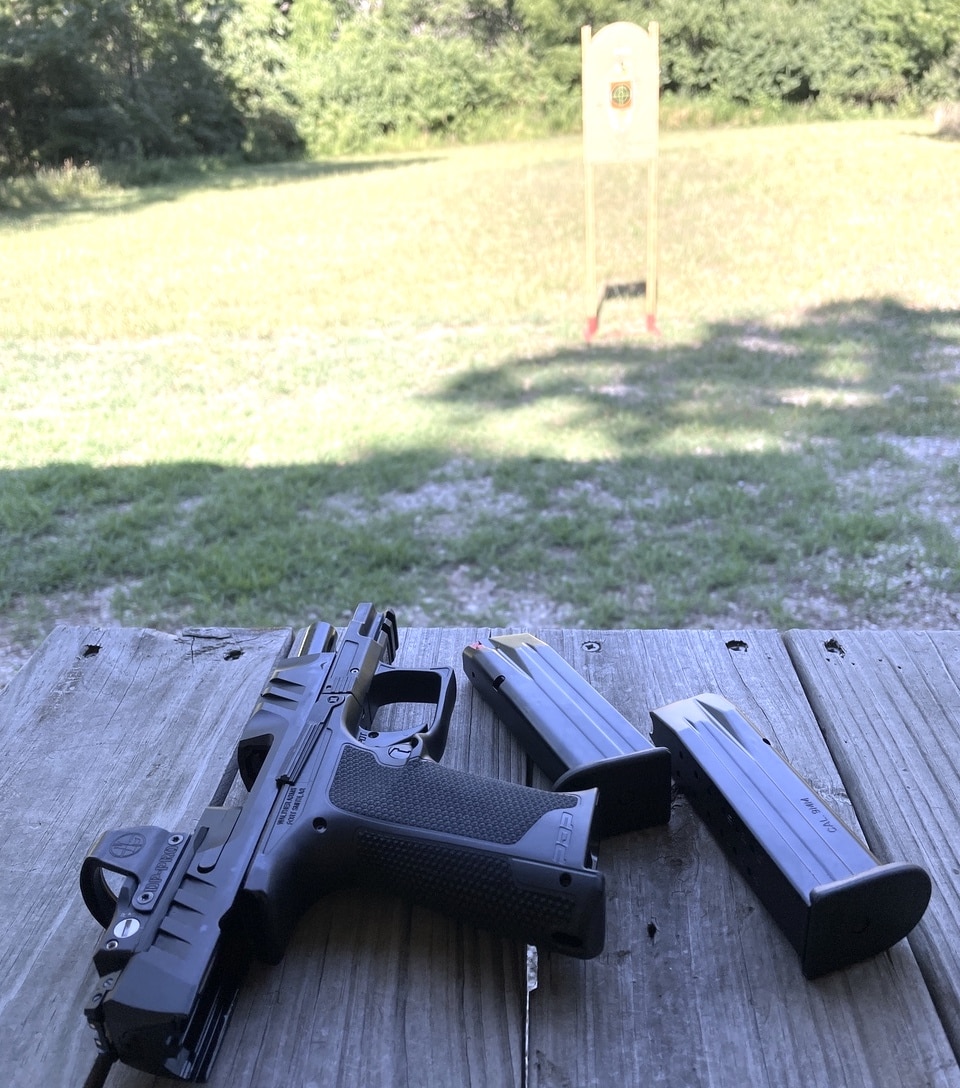
After tweaking the DELTAPOINT a bit at seven yards – we didn’t use the gun’s iron sights – (the pistol is intended for concealed carry, so we tested it at the minimum recommended personal defense distance), it came time for the accuracy test.
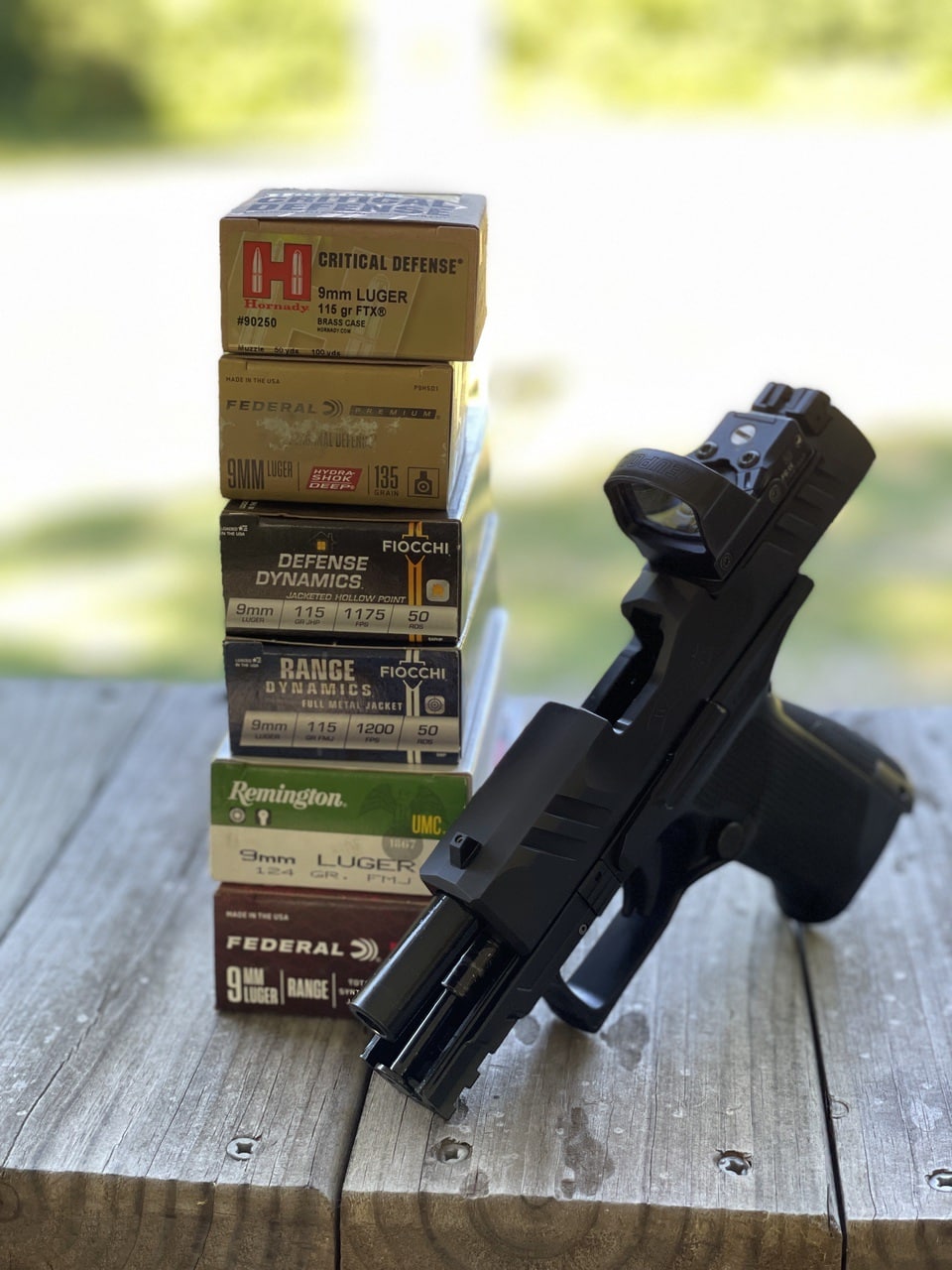
Fortunately, I have a good stock of 9mm ammo, so we (hubby – who is my range buddy as well) ran six different types of target and personal defense ammo through the gun. I set up the target frame at seven yards and used paper plates, one per group, with dots drawn in the center as targets. The dot is a good aim point, and since we were shooting groups instead of bullseye shooting, blank paper plates provided a good indicating surface. Testing involved shooting three groups of five shots per ammo type at the dot from a seated bench position.
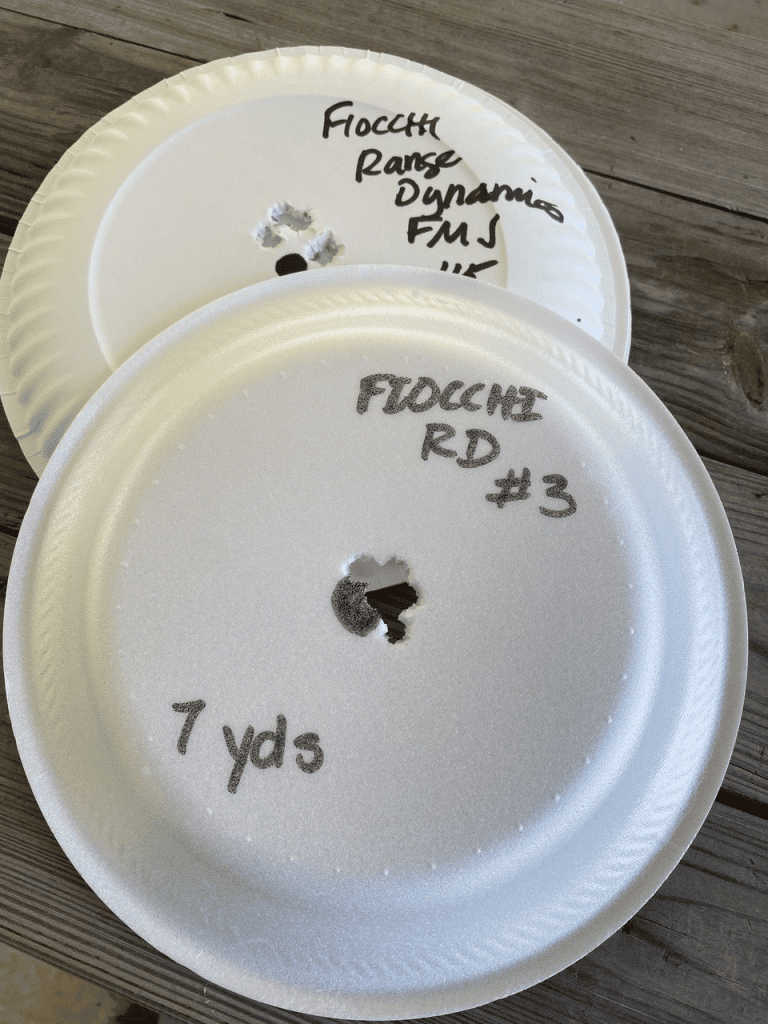
Here are the results of the tests:
Fiocchi Range Dynamics, 115 grain, full metal jacket: largest group – .75; smallest group – .75; average – .75
Fiocchi Defense Dynamics, 115 grain, jacketed hollow point: largest group – .75; smallest group – .5; average – .66
Federal Personal Defense Hydra-Shok Deep, 135 grain: largest group – .25; smallest group – .25; average – .25
Federal Syntech Range 9mm Luger, 115 grain: largest group – .75; smallest group – .5; average – .66
Hornady FTX Critical Defense, 115 grain: largest group – .75; smallest group – .5; average – .66
Remington UMC, 124 grain, full metal jacket: largest group – .75; smallest group – .5; average – .66
My husband, a former Air Force Academy pistol team shooter, remarked that only the “nut behind the butt” of this gun caused shots to fall outside of the remarkably tight groups. The gun appears to be capable of pinpoint accuracy at the test distance.
In our gun reviews here at The WON, we also like to suggest a helpful drill. Even better is if after you attempt the drill at your range, you perform it under the watchful eye of a certified instructor – just to make sure you’re doing it correctly. Or better yet, start there, under the watchful eye.
I’ve always liked the Mozambique Drill. It’s all about self-defense, and is basically a two shots to the chest (as quickly as possible), one to the head scenario. The history of the drill involves the Mozambican War of Independence (1974), and two men – Mike Rousseau and Gunsite’s Jeff Cooper. You can read about the history of the drill here. But in a nutshell, Rousseau, a mercenary, found himself face-to-face with a threat after turning a corner in Lourenco Marques, and had to deploy this tactic to stop it. He later told Gunsite’s Jeff Cooper about the two shots to the chest, followed by one to the head (or, in this case, the throat) and in the late 1970s, Cooper tied it into his training. In fact, I’ve done this drill numerous times at Gunsite.
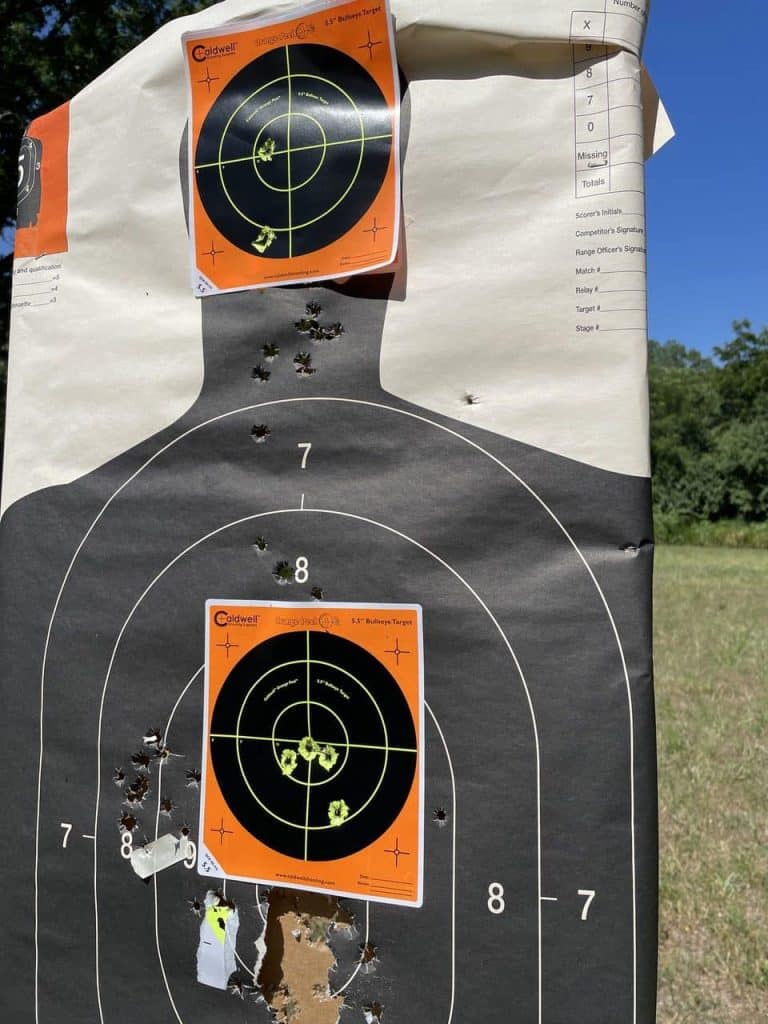
The goal is to get the shots off in under four seconds. For this drill, it’s good to use a silhouette target, if possible, or if you have a regular backer, just draw a head and the center of mass on it in the appropriate places. You want to stay within a suitable and reasonable range for the shot, so I shot from seven yards. You begin by drawing or by picking up a loaded gun, pointing it at the center and making two shots, as fast as accurately possible. Then, move the sights up to the head of the target and take one shot.
Recently, an NRA-certified trainer who also was a law enforcement officer and trainer told us that for legal purposes (some prosecutors may interpret the rapid shot to the head as intending to “murder” your attacker instead of stopping the attack), consider training to first assess the situation after the two shots to the chest. Should the threat continue to advance, make the shot to the head (aim for the area of the eyes).
You can practice this drill with a shot timer, and try to beat your best time so far. If your range will allow it, you can add the pressure of running up to the firing line and drawing before firing the shots. This will increase your heart rate, and add stress to your training that may help you to perform well if you are ever in a situation where you have to defend yourself.
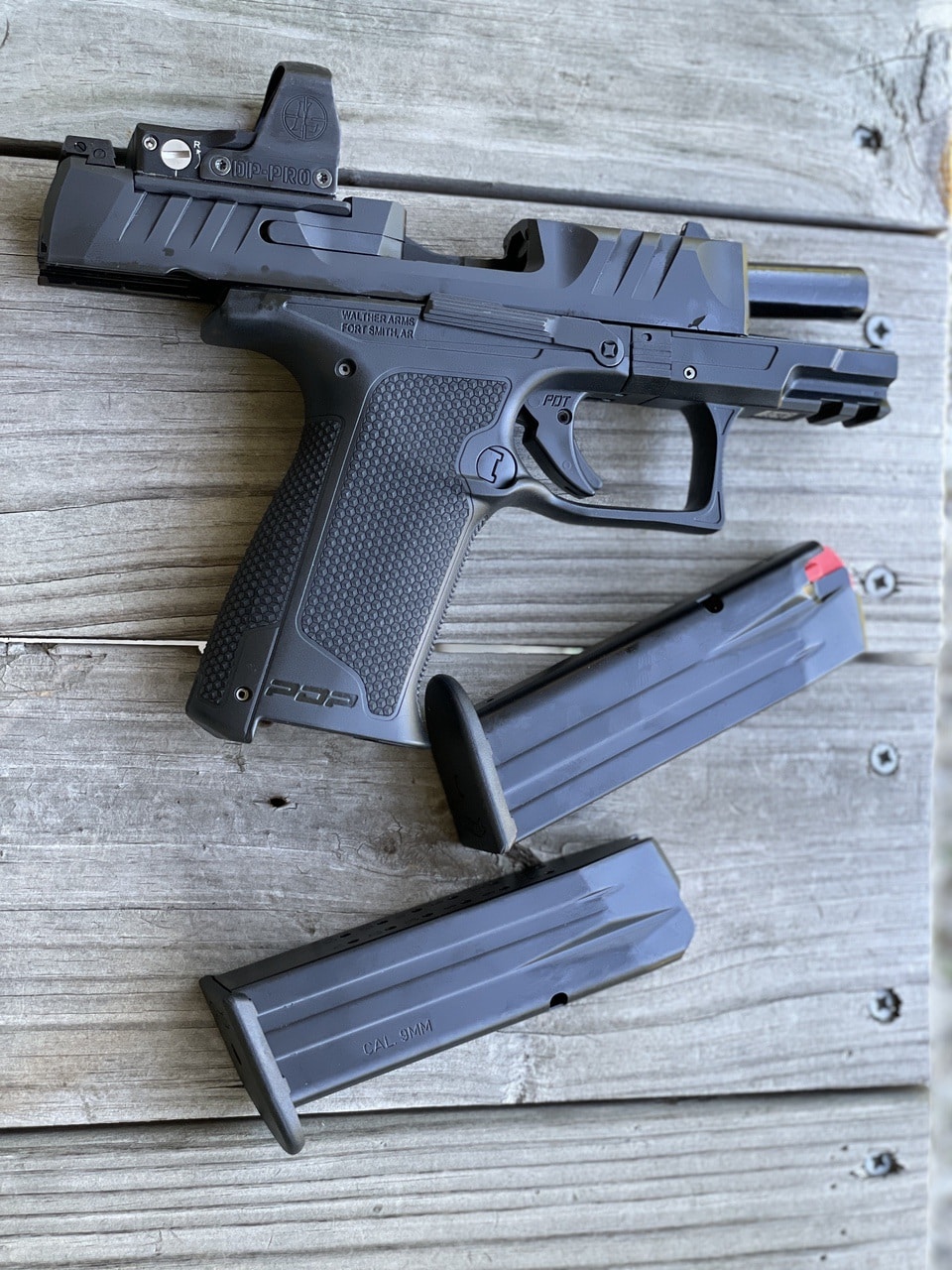
Based on my experience and these tests, the PDP F-Series achieves the goal of better fitting people with smaller than the average-male hand size. I believe that people with small hands will appreciate being able to not only get on target quickly, but also, back on target after a shot is fired. The gun’s Superterrain Slide Serrations came in handy on our hot and humid day at the range. The Performance Duty Texture worked as advertised, without being so aggressive that it abraded my hand during recoil (some recent texture schemes on handguns make you feel like you’ve been trying to grip a cheese grater). We had no malfunctions of any type with any of the ammunition we fired.
All in all, the gun is like a “Cool Hand Luke” in the gun world – not conforming to the standard pistol configuration, yet performing beyond expectation.
Walther PDP F-Series MSRP: $699
Publisher/Editor Barbara Baird is a freelance writer in hunting, shooting and outdoor markets. Her bylines are found at several top hunting and shooting publications. She also is a travel writer, and you can follow her at https://www.ozarkian.com. View all posts by Barbara Baird